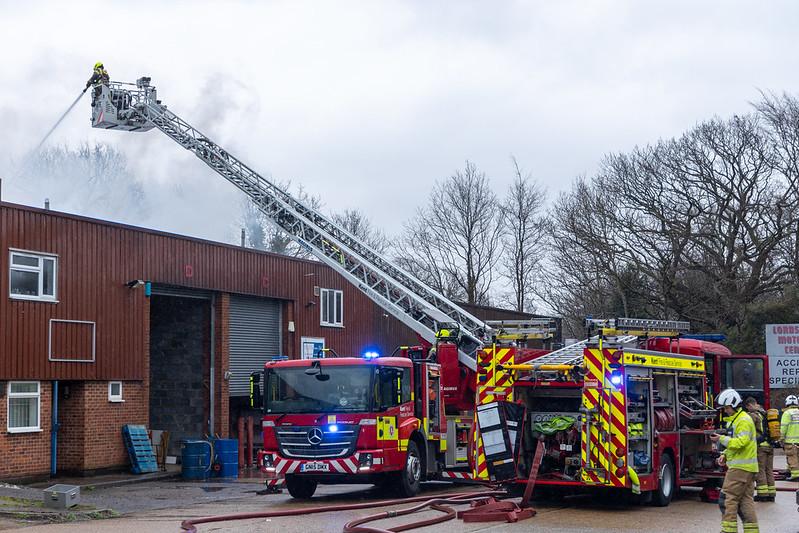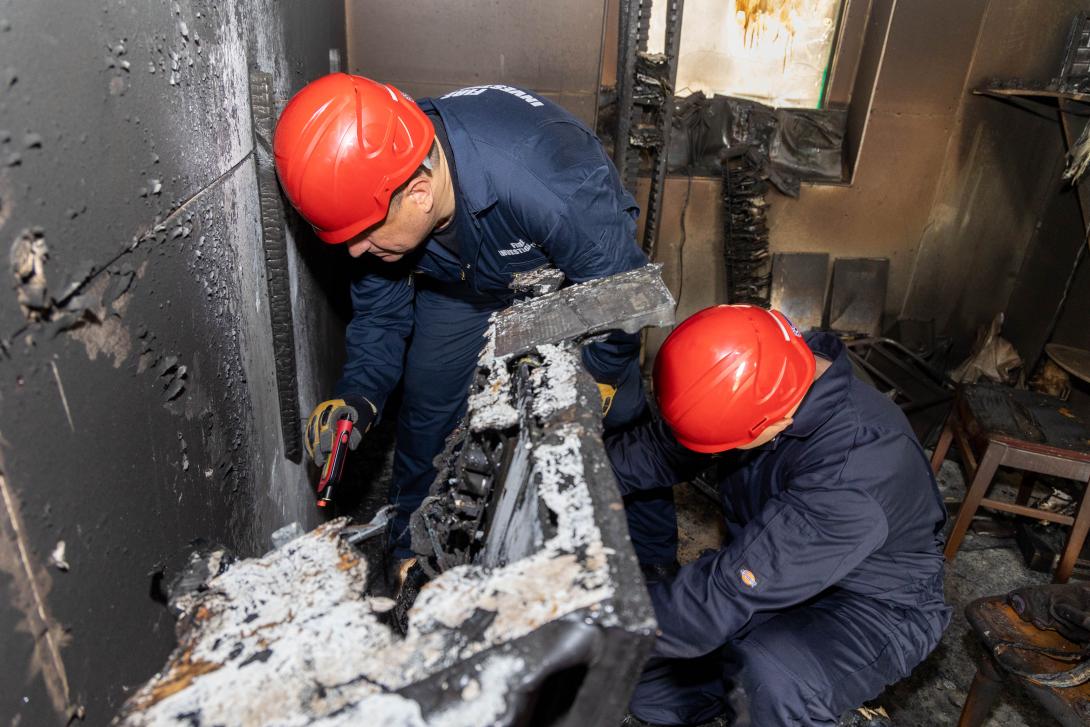If your business has a fire ...

Fire and businesses
Wherever there is a fire − whether in a business or a home − there will be a lot to think about and do.
Some of these things will be the same, regardless of where the fire is. For general information about what you need to know and do, please go to our ‘What to do after a fire’ and 'Support after an incident' pages. Here you will find helpful, general guidance relating to health, insurance, cleaning, safety and security, documents and chimney fires.
For businesses however, there are additional considerations that business owners, responsible persons and building owners will need to take into account. See below for further information ...
If you have had a fire at your business
- do not use the premises until they have been cleared and made safe
- check your fire precautions – including fire alarms, fire doors and extinguishers – are in full working order. If they are not, they should be replaced
- if your premises are still being used, make sure there is a way to escape for any one in or using the premises, so that they can get out if there is another fire
- review your Fire Risk Assessment - see below for further information
If you are not sure what to do
Contact Kent Fire and Rescue Service Business Safety Team via our Business Safety helpline:
by phone on: 01622 212 442
or by email at: [email protected]
Reviewing your Fire Risk Assessment after a fire
Your fire risk assessment is an important document which you must review regularly. This is because you have a legal duty to make sure your premises are safe for yourself and your staff, your customers, visitors, and anyone else who may use or attend your premises. You can learn more on our Fire Risk Assessment page.
Review your Fire Risk Assessment
After a fire you should review your Fire Risk Assessment. If you find any problems or deficiencies you should inform the person in control of the property so that action can be taken to rectify these. As part of the review, checks should be made on the following:
Escape routes –
Check if escape routes have been compromised,, obstructed, had structural damage, or have become unsafe to use as a result of the fire.
If your escape routes are compromised or are unsafe to use:
- check how far occupants have to travel to get to places of relative safety such as lobby areas. Are these distances excessive?
- where your main escape route is affected or can't be used, check if your alternative means of escape such as stairs or fire exits are still adequate for the number of occupants of the building,
Your fire detection system
- check if your smoke detection systems are still working
- Check if your fire detection and warning arrangements are adequate for your business and premises, especially if the fire had developed without being noticed.
Other active fire safety measures
Please be aware that in the event of a fire there may be other active fire safety measure − such as smoke control systems − which will activate and might need to be reset.
Identifying risks and helping to prevent fire
Understanding what could have contributed to a fire can help to prevent fire in the future. After a fire at your premises, use our six-point checklist below :
1. Check for contributory factors. This could be, for example, combustible material in areas where the fire arose.
2. Check if the fire spread rapidly because of inadequate or no separation between your fire resisting walls and ceilings, including in spaces and unprotected vertical shafts.
3. Check your ducting extraction systems are clean and well maintained.
4. Check doors are fire resistant and installed properly.
5. Check your electrical equipment and installations - (a) is there is proper ventilation? (b) are there are signs of overloading? (c) are there are signs of fire or water damage?
6. Check if you have any potential sources of ignition such as hazardous chemicals or cylinders that could have been in contact with combustible materials involved in the fire.

Arson
If the fire is arson, or arson is suspected
- the police will be informed
- fire investigators may visit the premises
- if any areas are sealed off, do not enter them
Remember … you are responsible for ensuring the premises are secure after the emergency services have left. By doing so you will help to reduce the risk of arson and vandalism.
Do you have a Business Continuity plan in place?
If your business experienced a fire, or an event such as a cyber attack, loss of power, a flood, or even a failure in your supply chain, would you have plans in place to enable your business to continue functioning?
Business Continuity helps you to develop a plan to deal with such situations, so that you know what to do to help keep your business running.
Having a plan and understanding the basics of business continuity can be invaluable. Learn more on the website of the Business Continuity Institute where you will find helpful information and courses.